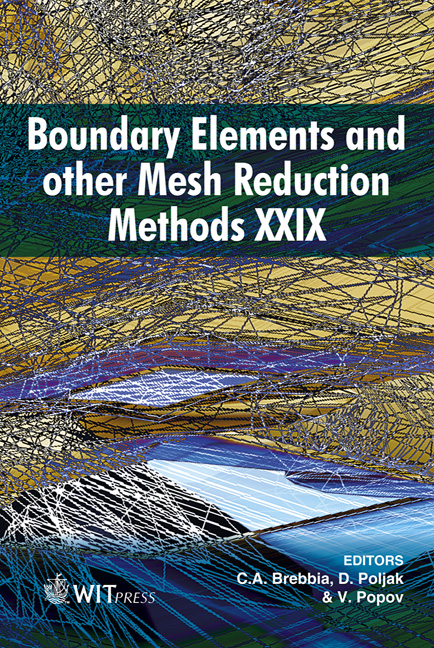Two-parameter Concept For Anisotropic Cracked Structures
Price
Free (open access)
Transaction
Volume
44
Pages
10
Published
2007
Size
405 kb
Paper DOI
10.2495/BE070251
Copyright
WIT Press
Author(s)
P. Brož
Abstract
For two-dimensional anisotropic elasticity the M-integral was evolved, in terms of the boundary element method serving for numerical determination of the T stress which represents a notable parameter for fracture evaluation of cracked solid bodies on top of the stress intensity factor. T-stress issues for the crack face pressure instances are employed as the reference solutions to infer weight functions, e.g. to obtain T-stress results for thick-walled cylinders weakened by an internal edge crack subject to any complicated loading. Some examples are demonstrated. Keywords: complex stress distribution, crack face, material anisotropy, remote load, self-regularization. 1 Introduction Besides the stress intensity factor, the T-stress is the other parameter reflected in fracture evaluation. The path-independent M-integral approach to interpret the T-stress, in conformity with Shah et al. [1], is augmented to use plane, in general anisotropic cracked constituents. It is realized in the boundary element method. An example is demonstrated to indicate the accuracy of the quantification formulated and its suitability. The numerical projects derived are illustrative of the fact that material anisotropy has indeed a substantial influence on the T stress. To assess the M integral, conceptions for the stresses and displacements at interior points are required. When being the interior points very close to the boundary, some inconveniences in the standard BEM representation arise. A technique to get over this near-singularity problem was issued as early as
Keywords
complex stress distribution, crack face, material anisotropy, remote load, self-regularization.





